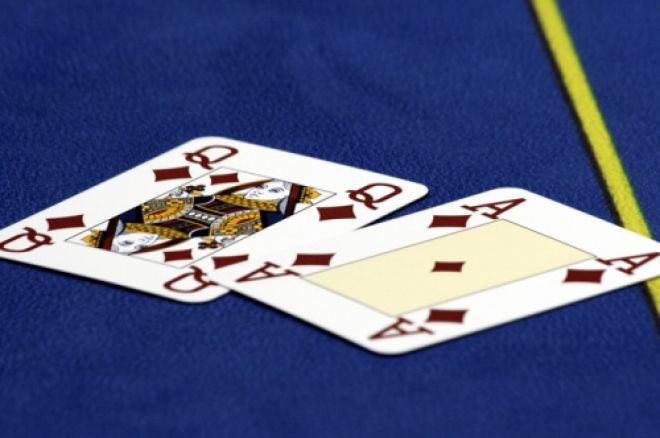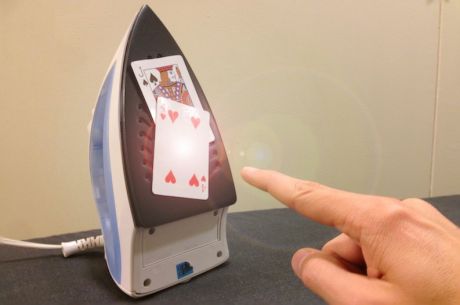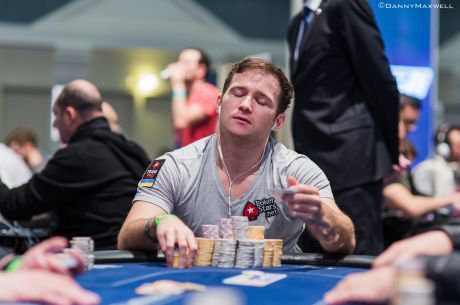Brunson, Harrington, and Negreanu On “Trouble Hands” in Hold’em

“Trouble hands.”
For some players just starting out at no-limit hold’em, every hand might be considered a “trouble hand.” But once you gain some experience and begin to sort out how different starting hands compare and tend to play, that category of “trouble hands” begins to shrink to a certain few that in most situations need to be played with caution.
Let’s take a look at what three hold’em greats have had to say in particular regarding these “trouble hands.”
Doyle Brunson
Many years ago Doyle Brunson devoted a special section to “Borderline or Trouble Hands” in his discussion of no-limit hold’em in Super/System. “They’re hands you can lose a lot of money with,” he explains, “so you should play them very cautiously.”
The hands to which Brunson refers include the following:

- AxQx, AxJx, Ax10x
- KxQx, KxJx, Kx10x
- QxJx, Qx10x
- Jx10x, 9x8x
For Brunson, these represent hands he does not recommend calling raises with generally speaking, although he qualifies that advice by saying he would do so if certain conditions were present — e.g., when playing from late position, when there has been a raise and a call in front of him (giving him good odds to come along), or when the cards are suited (often tipping him in favor of playing the hands).
He then goes on to explain why the hands can be attractive to play, with straight possibilities and (if suited) flush possibilities being a big part of their attraction. But he advises his readers to be careful with such hands after the flop, concluding with a general warning that “the important point to remember about the trouble hands is when you do get a flop with them you don’t want to get heavily involved. You should just try to play the pot as cheaply as possible.”
Or not at all. Brunson’s special dislike of AxQx over the years has been well chronicled. In fact, at one time the hand was ironically named after him because he claimed never to play it.
Dan Harrington
Writing many years later, Dan Harrington in Harrington on Cash Games added his own thoughts about the “trouble hands,” narrowing the list somewhat to focus on five in particular:

- KxQx, KxJx, Kx10x
- QxJx, Qx10x
(Harrington takes out the hands with aces and the lower connectors as he discusses them separately.)
If you look at the hands he’s chosen to focus upon, he’s chosen almost all of the non-ace hands that contain two Broadway cards (except Jx10x). All are attractive to us because of the relatively high ranking of the two cards, but as Harrington explains, that is precisely why these hands tend to cause trouble.
“Since the hands all contain high cards,” he explains, “they look like hands you want to play, and in many cases they are hands you want to play. In no-limit hold’em, however, they require an extra measure of caution because they are easily dominated by ace-high hands or even other hands of the group.”
By “dominated” Harrington refers to the situation of sharing the same hole card with an opponent who holds a higher “kicker” or second card. If I am playing Kx10x and you hold KxQx, I have a “dominated hand” that can get me in real trouble should a king come among the community cards.
That’s precisely the situation Harrington speaks of when echoing Brunson’s advice to proceed with caution after the flop with such hands. “When you play these hands, hit the flop with one high card, and then get action, you won’t know exactly where you stand. You may have top pair, with no obvious straights or flushes, and still have to let the hand go because of the implicit danger to your whole stack.”
Harrington adds further instruction about how unless you hit something big (e.g., a straight, flush, trips or better, etc.), these “are not hands to take to the river in a big pot” and how they aren’t good hands with which to be calling opponents’ raises.
Daniel Negreanu

In More Wisdom Hold’em for All Players, Daniel Negreanu drills down even further into the category of “trouble hands” to focus on one in particular — KxQx — a hold’em starter he calls “a dubious hand.”
“Novice players commonly overvalue the strength of KxQx when they flop a pair to it,” writes Negreanu, again highlighting the same tricky postflop spot both Brunson and Harrington draw attention to as well. As he explains, after a queen-high flop (for example), “most amateur players... aren’t sophisticated enough to know when to play the hand to the river and when to let it go.”
Like Brunson and Harrington, Negreanu is not keen on calling opponents’ raises with KxQx, and while he also points out that being suited helps, his main point is for players not to “get fooled into thinking KxQx is a premium hand.”
By the way, once Negreanu came up with a different nickname for AxQx, one not named after Brunson. He called it “1.4” — a reference to how he estimated he'd lost $1.4 million with it!
Conclusion
To summarize the advice of these three writers regarding “trouble hands,” proceeding with caution is most obviously the common message. Understand that flopping top pair with hands like KxQx, KxJx, Kx10x, QxJx, or Qx10x against a single opponent might well be enough to win a pot, but in most cases don’t be too anxious to build a big pot as you might be dominated.
Meanwhile against multiple opponents, flopping just a pair with these “trouble hands” is likely a spot in which you should find a fold, especially when facing others’ betting. However, those might be situations in which you do flop straight or flush draws and can get reasonable odds to proceed.
Even so, don’t let the “trouble hands” get you into too much trouble, and know that smart preflop decisions with them can help you avoid greater difficulty once the community cards come to complicate your life further.
Get all the latest PokerNews updates on your social media outlets. Follow us on Twitter and find us on both Facebook and Google+!








